Estimated reading time: 6 minutes
How do you grow almonds?
Well, we’re not almond experts – in fact, we’ve never made a dollar from an almond. But the way they grow is very similar to deciduous fruit, so we can still help out with some tips.
Is growing almonds easy?
We’ve grown almonds for years in our garden, and they’ve been an absolute winner.
We’ve drawn heavily on permaculture principles in our garden design. Nuts fit in beautifully because they’re one of the best sources of protein and oil that we can easily grow and process in our climate and on our scale.
They’re also a great crop to grow if you’re interested in pursuing a vegan, vegetarian, paleo, gluten-free, or dairy-free diet because they fit into them all.
Almonds are the perfect addition to a diverse food garden. The trees are not too big, so they’ll fit into most backyards.
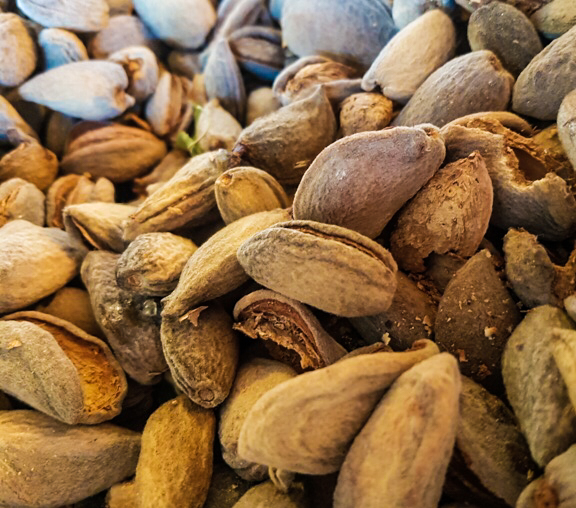
How long do almonds take to grow?
Almonds are in the same family as peaches and nectarines. They’re both in the subgenus Amygdalus of the Prunus genus, which means they grow in a very similar way.
If you’ve ever grown a peach or nectarine tree, you’ll know they can start bearing fruit pretty quickly. The same is true of almonds.
It’s easy to see the similarity when you compare the following photo of a peach tree at shuckfall (when the new fruits are emerging from the shrivelled flowers) with the one at the top of the page.

Like peaches, almonds grow well in the ‘vase’ shape we favour for other deciduous fruit trees. Similarly to peaches and nectarines, they produce the nuts on the wood that grew last year, though they also produce nuts on spurs on the older wood.
One of the (welcome) differences between almonds and peaches is that almonds don’t get Leaf curl. However, they can still be affected by Blossom blight, the fungal disease that can cause the flowers to rot.
How to prune your almond trees
Almonds are pruned in the same way as other fruit trees. Our foolproof 7-step pruning system works just as well for them.
However, some varieties are more productive if they are heavily pruned, while others seem more productive if they are lightly pruned. If you grow more than one variety, it pays to experiment a bit and pay attention to the results.
Birds LOVE them, so they must be netted if you want to pick any nuts. This means you need to keep the height of the trees low enough to get your nets over. It’s also a good idea to choose a spot in the garden where they will be easy to net without obstructions around them.
What else does your almond tree need?
Almonds like plenty of water. Like most fruit trees their need for water can be kept to a minimum if you improve the soil. Maintaining a good ground-cover of grasses and weeds under the tree also helps.
They respond well to a once-a-year feed of compost and well-rotted chook manure.
They are the very earliest deciduous trees to flower in spring, which makes them very vulnerable to frost. Choose the most frost-free spot in your garden for your almonds, apricots, and cherry trees.
From the end of winter keep an eye on them so you’ll notice when they start to flower. This is your trigger to watch out for frost warnings from the weather bureau and cover your trees with frost cloth on frosty nights.
You can also reduce the risk of frost damage by planting them in a protected microclimate. Near a water tank, or against a north-facing wall are both good possibilities.
Pollinising buddies
Like other deciduous fruit trees, almonds need the right polliniser nearby to set a good crop of nuts. There are four easy ways to solve this problem:
- Plant two trees known to be pollinisers. They can go in the same hole if you’re really short of space.
- Stick to self-pollinising varieties.
- Plant a multigraft tree that has more than one variety on the same tree.
- Plant a single variety, then graft a pollinising variety onto the same tree.

Almonds in your diet
Growing your own almonds is a great way to include more home-grown protein and healthy oil in your diet. They are fantastically versatile, and can be used in a number of ways.
It’s easy to ground almonds finely in the food processor to create your own almond meal, which is a great flour substitute for those on a gluten-free diet.
If you’re on a dairy-free diet (or just want to add diversity to your diet), it’s simple to make your own almond milk.
And of course, fresh almonds are an easy and nutritious snack for any time of the day (and great for kids’ lunches).
Our conclusion?
Almonds are an easy-care tree to add to your garden. All in all, they’re a winner!
Related Articles
How to tell fruit buds from leaf buds
Understanding the difference between fruit buds and leaf buds on your fruit tree makes everything else about fruit growing easier.
Will subtropical fruit trees work in your garden?
A lot of subtropical fruit comes from indigenous forest cultures, but that doesn’t mean you can’t grow it in your backyard.
Animals, fruit trees, and electric fences
Animals and fruit trees go well together if you can figure out how to enjoy the benefits without the animals doing too much damage.

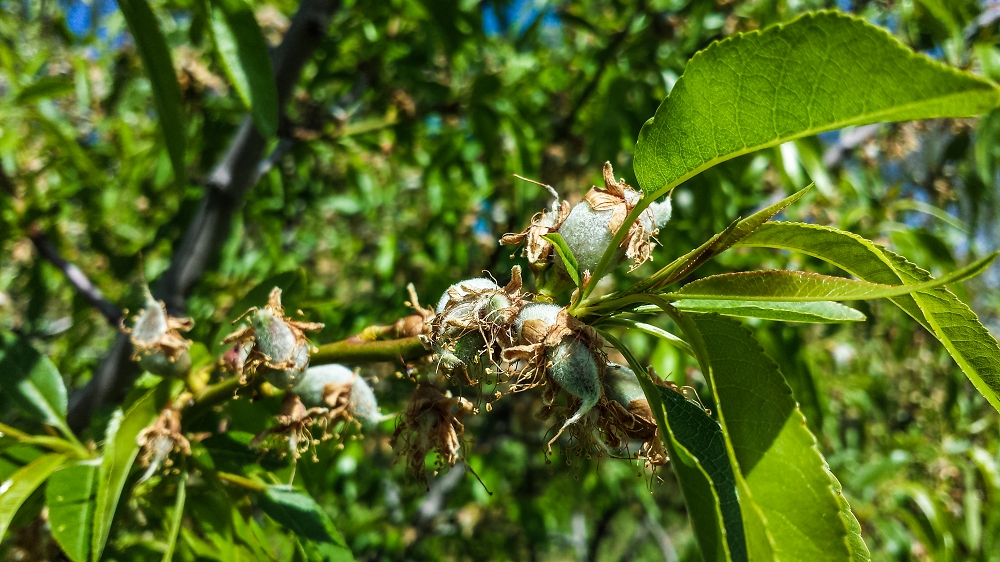
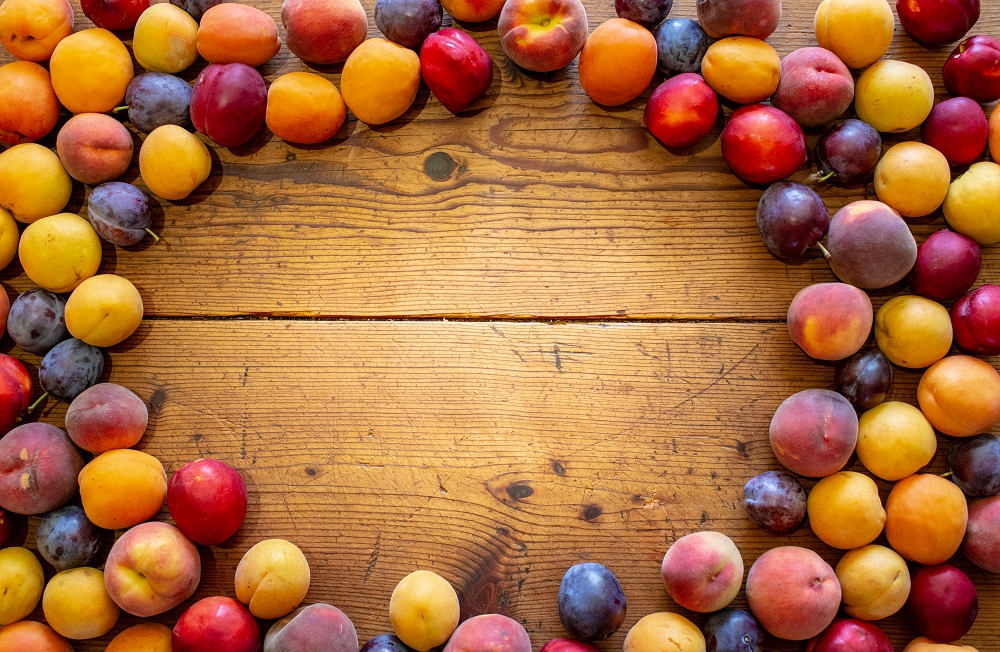
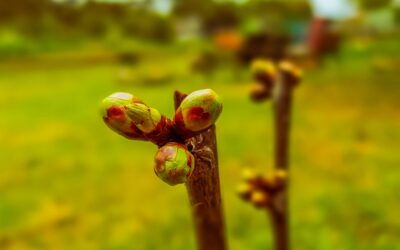
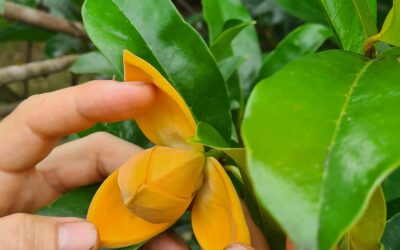
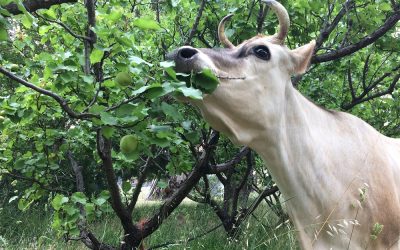
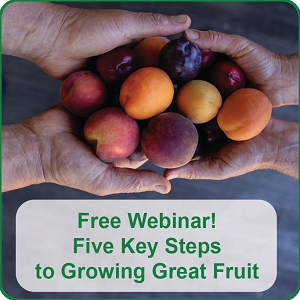
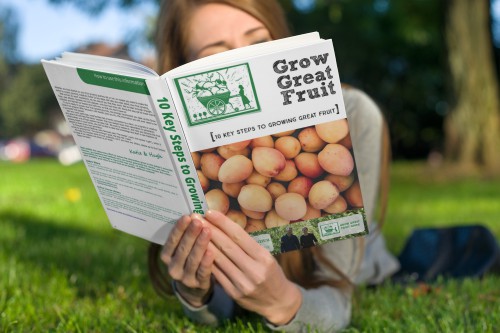
I thought almonds flower in spring – so a bit confused by your statement –
[beginning of August keep an eye on them so you notice when they start to flower”. A typo? Or am I simply uninformed? Thanks! Angela
“Choose the most frost free spot in your garden for your almonds, apricots and cherry trees, and from the beginning of August keep an eye on them so you notice when they start to flower, because this is your trigger to watch out for frost warnings from the weather bureau, and get the trees covered on frosty nights with some frost cloth. They’re also a good candidate for planting near a water tank, or against a north facing wall.>
Hi Angela, you’re right, almonds flower in spring – the bit that catches everyone out is that as far as the trees are concerned, spring has often started when we humans still think it’s winter! We learned the hard way to start monitoring our almond, peach and nectarine trees much earlier than we thought was necessary (we actually start in July) for early signs of budswell, because once it begins it can happen very quickly depending on the seasonal conditions.